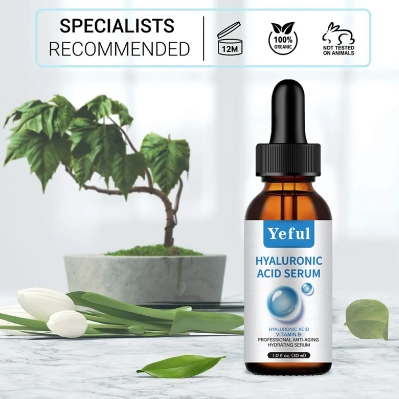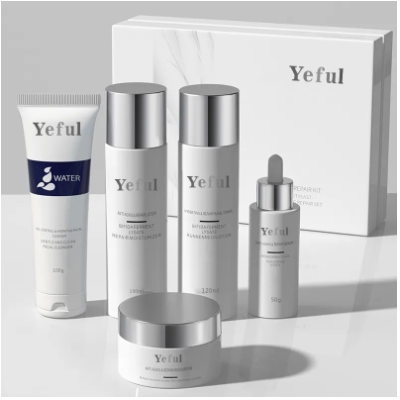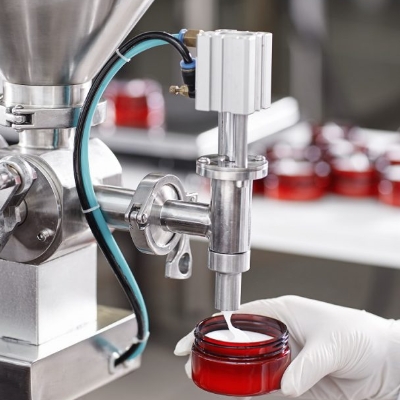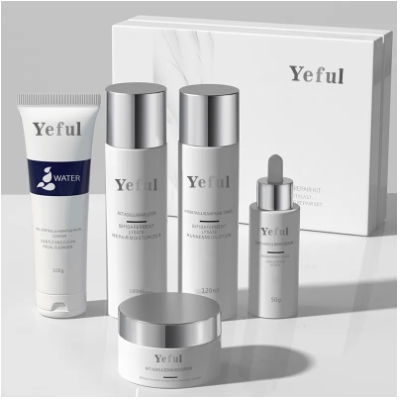The Differences Between Skincare ODM and OEM
- 2024-07-01 21:44:06
Introduction
The skincare industry has experienced tremendous growth in recent years, driven by increased consumer demand for innovative, efficient, and personalized products. Original Design Manufacturing (ODM) and Original Equipment Manufacturing (OEM) are two widely adopted business models by brands and manufacturers in this sector. It's essential for beauty brands to understand the differences between these two models and the respective advantages and disadvantages, ensuring they choose the ideal manufacturing partner that supports their vision and long-term objectives.
This article provides a comprehensive comparison of ODM and OEM in the skincare industry, discussing their respective pros and cons, and offering guidelines to determine which model best suits a beauty brand's unique needs.
What is ODM?
Original Design Manufacturing (ODM), also known as private label manufacturing, is the process in which a manufacturer designs and produces skincare products according to their proprietary formulations and specifications. The final products are then packaged and labeled with the branding of the beauty brand or retailer that hires the ODM company. This model allows brands to sell products without investing time and resources into product design, formulation, and manufacturing, as these responsibilities are largely handled by the ODM manufacturer.
Pros of ODM:
Lower startup and development costs: The ODM manufacturer manages the design, research, and development aspects of product creation, significantly reducing the expenses associated with these operations for the beauty brand.
Reduced time to market: Many ODM companies have extensive portfolios of ready-made formulations, which allow brands to hasten product launch timelines.
Access to industry expertise: ODM manufacturers often possess vast experience in skincare product development, ensuring higher quality and market success for the products.
Cons of ODM:
Limited customization options: ODM typically restricts a brand's control over the design and formulation of products, potentially leading to less differentiation in the market.
Possible Intellectual Property (IP) concerns: The ODM manufacturer usually owns the formulation and design patents, limiting a brand's ability to protect its products from competition.
What is OEM?
Original Equipment Manufacturing (OEM) refers to the process in which a skincare manufacturer produces products based on the specifications, design, and formulations provided by the beauty brand or retailer. With the OEM model, the brand guides and manages the design, formulation, and other Intellectual Property (IP) aspects, while the manufacturer is in charge of manufacturing operations, ensuring final products adhere to the brand's unique requirements.
Pros of OEM:
Greater control over product design and formulation: With OEM, beauty brands have more control over product customization, allowing the creation of unique and innovative products tailored to their target market.
IP ownership and protection: OEM enables brands to own and protect the rights to the formulations and designs, ensuring better control and security in the marketplace.
Opportunity for close collaboration: OEM allows brands to establish strong partnerships with manufacturers, leading to enhanced communication and synergies in product development.
Cons of OEM:
Higher startup and development costs: Brands are responsible for the initial costs associated with research, development, and design operations.
Longer time to market: The OEM model typically requires more time, as the brand guides and coordinates with the manufacturer throughout the designing, formulating, and manufacturing stages.
Potential need for additional resources: Managing OEM manufacturing needs might necessitate hiring or allocating more personnel for the brand.
Choosing the Best Model for Your Skincare Brand
To select the most suitable model – ODM or OEM – for a skincare brand, several factors should be carefully considered, including:
Budget and resources:
ODM may be more appropriate for startups or smaller brands with limited funding, as it offers a less expensive product development process. Conversely, OEM might better suit established businesses with enough resources available for investing in product development.
Market positioning and differentiation:
If achieving product differentiation through unique formulations or designs is a core brand value, OEM may be the optimal choice. On the other hand, if a brand's focus is on delivering quality, off-the-shelf skincare products, ODM could be more fitting.
Time-to-market requirements:
For brands with tight product launch timelines, opting for ODM can prove advantageous due to its ability to leverage existing formulations and designs. However, if a brand has extended product development deadlines, OEM might be a better alternative.
Intellectual Property considerations:
Brands that prioritize IP protection should seriously consider the OEM model, while those less concerned with maintaining exclusive rights to product designs and formulations can go for ODM.
Conclusion
Understanding the differences between ODM and OEM in the skincare industry is crucial for brands to make an informed decision when choosing their manufacturing partner. By weighing factors such as budget, market positioning, time-to-market requirements, and intellectual property, brands can identify the model best aligning with their goals and vision. Ultimately, choosing the right model will result in successful and competitive skincare products within the ever-growing beauty industry.
Procurement Advice From YEFULSKINCARE
When formulating skincare products, it is essential to consider specific procurement aspects during the ingredient selection phase of development. Experienced skincare manufacturers have in-depth knowledge of minimum order quantities and costs for various ingredients. Before formulating a product, these factors must be considered to ensure that only economically viable ingredients are selected.
Skincare manufacturers like YEFULSKINCARE have long-standing relationships with major suppliers, allowing them to leverage these networks when sourcing hard-to-find or obscure raw materials. This proves invaluable when ensuring timely procurement and cost-effective production runs.
In conclusion, partnering with YEFULSKINCARE offers numerous advantages to skincare companies looking to develop and launch successful product lines. Their industry experience, professional knowledge, state-of-the-art facilities, and commitment to cost-effective solutions make them an ideal choice for those seeking expert guidance and support through the product development process.




